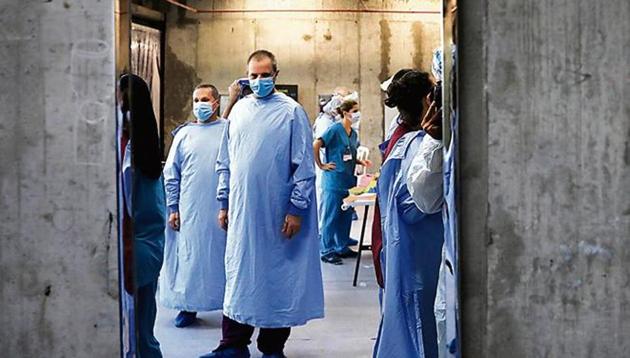Covid-19: What you need to know today
Around one in 12 people infected by the disease has a chance of becoming a superspreader.
Science published a paper based on one of the world’s largest contact tracing exercises on Wednesday. The study, covering 85,000 primary cases, was conducted in Andhra Pradesh and Tamil Nadu by a team of researchers led by Ramanan Laxminarayan of the Centre for Disease Dynamics, Economics & Policy. The study tracked the spread (or non-spread) of the infection in around 575,000 contacts of the 85,000 to come up with some really interesting findings. HT reported those findings on Thursday. Still, given the magnitude of the exercise – I’d take any study with a sample as large as this one seriously – and the fact that it answers some very basic questions about the coronavirus disease (Covid-19), some of the findings bear repetition in this dispatch.

1) Not everyone infected with the Sars-CoV2 virus, which causes Covid-19, passes it on
We have known this for some time – but anecdotally. Previous instalments of this column have referred to the fact that not everyone who comes in contact with an infected person gets infected (or not every infected person passes the infection along; essentially, two ways of looking at the same event), and of how the majority of infections are caused by so-called superspreaders. The Science study quantifies these. For instance, it found that 70.7% of the 85,000 index patients (or primary cases) did not pass it on to any of their contacts, including close ones living in the same household. The reasons for this aren’t known.
WATCH | Covid update: Germany flights cancelled; New York’s positivity rate rises
2) Some of those infected with the Sars-Cov2 virus pass it on to far too many people
These are the superspreaders referred to above, and the study found that 8% of the index patients were responsible for 60% of secondary infections. This means that around one in 12 people infected by the disease has a chance of becoming a superspreader (we still do not know why, although it is likely to be a combination of physiological, social and environmental factors). If only there was any way of identifying potential superspreaders…
But here is where the study begins to get interesting. We have known all along that there are risks involved in coming in contact with an infected person, or being seated next to one on a long flight. The Science study quantifies these too. This is the kind of information actuaries could use to construct a risk matrix for daily activities.
3) The secondary attack rate – an index patient passing on the infection to a contact – is 10.7%
If we were playing jeopardy, the question to this answer would be: What is the risk of a person contracting Covid-19 when exposed to someone already infected with the virus? And this too is in the case of “high-risk contacts”, according to the study – people who have had close physical and social contact with the infected individual, and without masks or other protective measures. For low-risk contacts, this probability is 4.7%.
4) The secondary attack rate is the highest for those sharing conveyance with an index patient for at least six hours – 79.3%
This makes rail and (medium-duration) air travel the most risky.
Most daily interactions outside the house (including in the workplace) fall under the study’s definition of low-risk criteria, something that should reassure those of us who have already returned to offices. Interestingly, while studying instances of like-infecting-like, the researchers found that “enhanced transmission in similar pairs” were the highest among children below the age of 14 and senior citizens over the age of 65 – findings that could have a bearing on school-opening strategies and also explain why care- and old-age homes in some parts of the world were ravaged by Covid-19.






